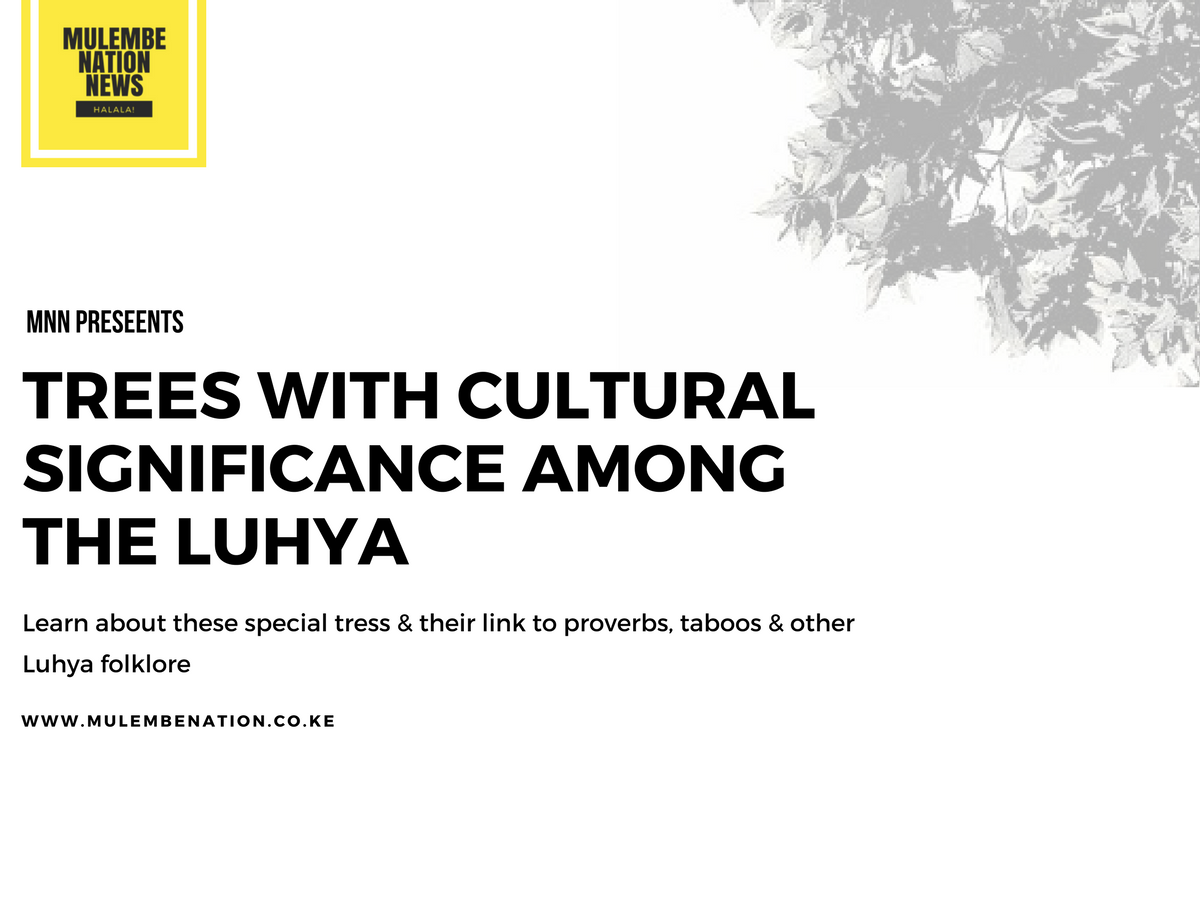From kumfutu, chingayu, kumusiola, kumurembe and more. Meet shrubs, herbs and trees with cultural value among the Luhya.
By the shade of a mango tree upfront my parents house, we have grown. They, our parents, growing up just as they have with us, got counseled there. Its shade know not only our ways, but the dreams our forefathers. One generation to the next has been nourished by its fruits. We are glad this kumuembe tree has sealed its mouth on our family secrets and struggles discussed in whispers under its bloom. Whoever planted it may be long gone. Whoever will witness its death may yet to be born. Still, here at mulembenation.co.ke we celebrate her and her kind. And lay plans to plant and nurture more of her type.

African Culture and Environmental Conservation
Plenty is made of the Maasai and their conservatory mien. In such a way that how aspects of Maa culture fortify sustainable living is now contemporary knowledge.
Not only has this perception been a source of immense cultural pride – therefore a boon to efforts to conserve Maa culture; this perception of the Maa people has also been a source of wealth through cultural tourism.
We believe that communities of Mulembe, of Africa’s great lakes region, deserve a piece of the pie as their culture is rich in environmental conservancy.
For example, we start closer home with the Baganda. The Baganda are a Ugandan Bantu tribe with close historical ties with the Luhya of Kenya. It comes at no surprise that the Baganda stand to be counted as having pedigree in environmental conservation. As the Ugandan scholar Lssozi reveals:
Environmental conservation in Buganda was guided by clearly streamlined gender roles and cultural values through spirituality and and the clan system which defined the ethical relationships between human culture and the environment.

Well, what about the Luhya?
A reader of our blog, making use of the platform for conversation that social media is, sought to know: Which are the trees with cultural significance among the Luhya?
We obliged to the query. This article will introduce us to trees with cultural significance to the Luhya. In particular, we illustrate how most traditional African cultures attributed values to nature as a way of explaining their lived experiences.
Join us as we learn the names of trees in Luhya and their cultural value, through the story of the friendship of enjusi the fox and Kumukhuyu; there’s also the absurdity of kumusola tree and divorce among the Luhya; maybe the healing powers of kumwimbwi might interest you.
Whatever your gravy, we are here to serve. The names of trees in Luhya and their cultural significance.
Medicinal trees, herbs and shrubs
- Nalulwe
- Kumufutumwe; scientific name is Senegalia ataxacantha or Acacia ataxacantha.
- Kumwimbwi. Member of faboideae. Possibly a relative of the Senna petersiana tree that’s indigenous to tropical Africa.
Tree, herbs and shrubs significance as a link to culture and belief
- Chingayu shrub also known as imbasa; Creeping bauhinia (English). Fruits often simply referred to as a variety of sesame.
- Kumufutu/Muholu/Omufutu tree also known as kumufutumwe. Scientific name vitex doniana.
- Lunani or sinani shrub; scientific name is Senegalia ataxacantha or Acacia ataxacantha.
- Kumukhendie tree (Bukusu) or Lusasari (Maragoli). Scientific name Allophylus ferr.
The forest as a location for social, cultural and religious activities
- The forest provided sites where initiates convalesced after traditional circumcision. This tradition is still practiced by, Kabaras and Tiriki, sub-tribes of the Luhya who reside in the areas neighboring Kakamega forest.
The judicial function of trees
- Kinagosi tree; a member of the genus Euphorbia.
- Kumusola tree also known as uluwovu or olusiola; Scientific name: Markhamia lutea. Common name: Nile Tulip tree.
The use of tree and forest products in social, cultural and healing ceremonies
- Kumurembe tree
Subscribe to Mulembe Weekly
Get culture, language, stories and discussions in your inbox every Friday 5 PM East Africa Time

